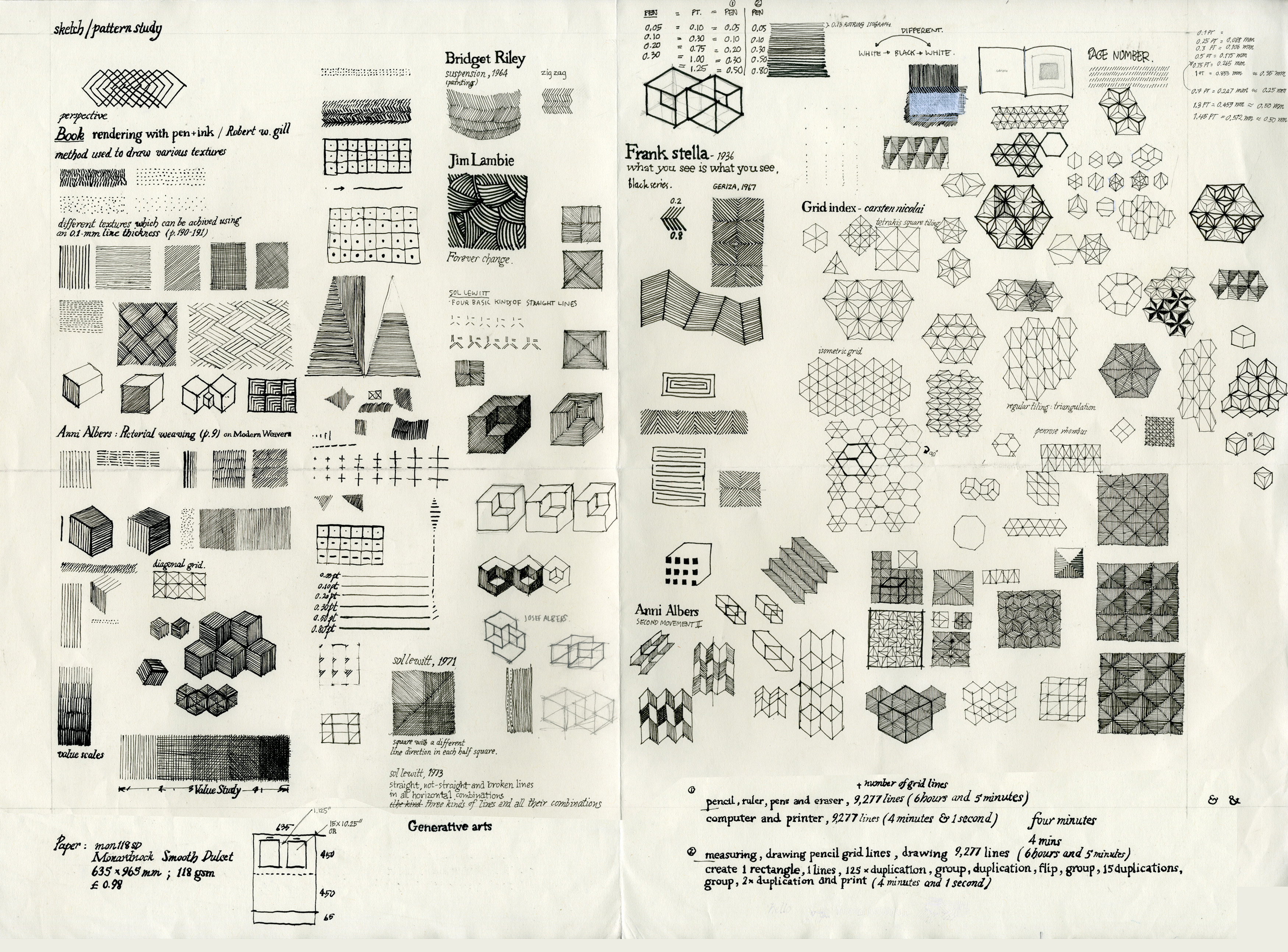︎
work archive 2011—now 2009—2010
hand vs machine drawings text book+video

‘There is repetition everywhere and nothing is found only once in the world.’
- Johann Wolfgang von Goethe
We transport goods and people by it; we grow and harvest our produce by use of it and we no longer write because of it. It is the machine. In the age of digital reproduction, we forget our hands are still here. We use them less to perform repetitive tasks, because it is the role of the machine. We draw, we paint and we produce copies and copies of it all. In these times of change, it becomes more difficult to notice what has been lost. We now spend less time on the tasks where we previously spent much. We rely so much on time and labour saving devices we forget how much we have changed.
The machine makes it fast and with a short life span. The familiarity of undo, redo, copy and paste have changed the way we live as well as the value we place on content and creation itself.
Our lives are full while the inside we are empty. Our ability to concentrate is decreasing; minutes, hours and days of focus, lost. Repetition is everywhere and by spending more time looking at copies of copies of copies, we begin to see a beauty within it - in particular, the copies found in nature and in those finished by our own hand.
Machine reproduction seems to devalue however, the handcrafted reproduction, even with its slight imperfections, can increase appeal and worth. In a world of machine made products, to see a handcrafted piece of work, one so beautiful we have trouble believing that our own hand created it is a pure delight.

random sketches from the making of the project, 2010

This book is a documentation of the project featuring eight pieces of work. In each of them, there is a repetitive hand made piece placed alongside its counterpart, made by computer.
The patterns in the work are inspired by the elements of pen and ink drawing, geometric form and grids as well as artists who developed work in fields of Minimal Art, Optical Art and impossible figures such as Agnes Martin, Sol Lewitt, Bridget Riley, Josef Albers, M.C. Escher and Oscar Reutersvärd.

9,277 lines is the first of the series developed at the very beginning of this project. 7,701 lines, 9,880 lines (h.) and 9,880 lines (v.) were inspired by a macro pattern of textile. 3,952 outlined squares is based on an outline of a square created with a computer software. At the centre of the shape, x stands for its co-ordinate on the screen. 286 boxes, 2,025 hexagons and 1,976 triangles and 988 hexagons derived from a study of the Necker Cube, Japanese hemp leaf pattern and the hexagon.
The project reveals not only the difference of time spent between the machine and the hand, or how delicate the result is, but the amount time spent with oneself. To observe the feelings that happened along the way, the focus, the contemplation, the pain in your eyes, your shoulders, your arms and your hands. Above all the piece is to aid awareness for the value of that, which has been created by your own hand. You will never realize until you get closer to the work, until you become part of the process.
In the making of this project, I would like to thank my family, my tutors, Andrew Haslam, Roz Streeten and Maria da Gandra for all your kind supports and comments, Sam Messenger, Aaron, Tarn, Nat for a tripod and other friends in the course.